ড. মোহাম্মদ শাহ আলম বঙ্গবন্ধু শেখ মুজিবুর রহমান কৃষি বিশ্ববিদ্যালয়ের (বশেমুরকৃবি) ভেটেরিনারি মেডিসিন ও এনিম্যাল সায়েন্স অনুষদের এনাটমি ও হিস্টোলজি বিভাগের সহযোগী অধ্যাপক। বর্তমানে তিনি শিক্ষা ছুটিতে চীনের সাংহাই জিয়াও টং বিশ্ববিদ্যালয়ের (Shanghai Jiao Tong University) বায়োমেডিক্যাল ইঞ্জিনিয়ারিং স্কুলে পোস্ট-ডক্টোরাল ফেলো হিসেবে কর্মরত আছেন।
তিনি বাংলাদেশ কৃষি বিশ্ববিদ্যালয় থেকে “ডক্টর অব ভেটেরিনারি মেডিসিন” (D.V.M) এবং “মাস্টার্স ইন এনাটমি” ডিগ্রি অর্জন করেন। পরবর্তীতে জাপানের টোকিও বিশ্ববিদ্যালয় থেকে ২০১০ সালে ভেটেরিনারি মেডিকেল সায়েন্সে পিএইচডি লাভ করেন।
ড. শাহ আলমের গবেষণার মূল ক্ষেত্র অপটিক্যাল টিস্যু ক্লিয়ারিং, ৩ডি ইমেজিং, এবং প্রজনন এন্ডোক্রিনোলজি। তিনি প্রাণীদেহের কোষীয় গঠন, প্রজনন প্রক্রিয়া, ও পরিবেশগত রাসায়নিক পদার্থের প্রভাব নিয়ে গবেষণা করেন। তাঁর গবেষণা আন্তর্জাতিকভাবে স্বীকৃত এবং একাধিক আন্তর্জাতিক জার্নালে প্রকাশিত হয়েছে।
💬 প্রশ্নোত্তর পর্ব:
প্রশ্ন: বর্তমানে আপনি কী নিয়ে কাজ করছেন?
উত্তর: আমি “Optical tissue clearing based on CLARITY, uDISCO, CUBIC techniques and 3D imaging” বিষয়ে গবেষণা করছি। এই প্রযুক্তির মাধ্যমে অঙ্গ বা কলা (tissue) পরিষ্কার করে ৩ডি ইমেজিং করা যায়, যা ফিজিক্যাল সেকশন ছাড়াই কোষীয় গঠন বিশ্লেষণ করতে সহায়তা করে। এই পদ্ধতিতে আমরা লিভার, কিডনি, প্রজনন অঙ্গসহ বিভিন্ন অঙ্গ পর্যবেক্ষণ করছি। ইতিমধ্যে পাকস্থলীর গ্যাস্ট্রিক গ্রন্থিতে একটি নতুন কোষ চিহ্নিত করেছি, যার কার্যপ্রণালী নিয়ে বর্তমানে গবেষণা চলছে।
প্রশ্ন: বায়োমেডিক্যাল ইঞ্জিনিয়ারিং বলতে কী বোঝায়?
উত্তর: বায়োমেডিক্যাল ইঞ্জিনিয়ারিং হলো একটি আন্তঃবিভাগীয় বিজ্ঞানশাখা যেখানে জীববিজ্ঞান, রসায়ন, পদার্থবিদ্যা, প্রকৌশল, গণিত ও চিকিৎসাবিজ্ঞান একত্রে কাজ করে। এর লক্ষ্য হলো চিকিৎসা প্রযুক্তি উন্নয়ন, রোগ নির্ণয়ের নতুন কৌশল উদ্ভাবন, এবং মানুষের স্বাস্থ্যসেবা সহজ করা। এখানে প্রকৌশলী, চিকিৎসক ও গবেষকেরা সম্মিলিতভাবে কাজ করে চিকিৎসা বিজ্ঞানে প্রযুক্তিগত উদ্ভাবন ঘটান।
প্রশ্ন: আপনি কোন প্রাণী বা মডেল ব্যবহার করে গবেষণা করেন?
উত্তর: আমি মূলত ইঁদুর, মাউস ও মানবকোষ ব্যবহার করি। পিএইচডি পর্যায়ে পুরুষ প্রজনন ও পরিবেশগত রাসায়নিক পদার্থের প্রভাব নিয়ে গবেষণা করেছি। বর্তমানে এসব ল্যাব এনিম্যাল ছাড়াও মানুষের ক্লিনিক্যাল নমুনা নিয়েও গবেষণা করছি। এতে পরীক্ষার ফল বাস্তব জীববিজ্ঞানের কাছাকাছি হয়।
প্রশ্ন: টোকিও বিশ্ববিদ্যালয়ে আপনার অভিজ্ঞতা কেমন ছিল?
উত্তর: টোকিও বিশ্ববিদ্যালয়ে ২০০৫ থেকে ২০১০ সাল পর্যন্ত আমার পিএইচডি জীবন ছিল জীবনের সবচেয়ে গুরুত্বপূর্ণ সময়। আমার সুপারভাইজার প্রফেসর মাসামিচি কুরোহমারু ছিলেন অত্যন্ত মানবিক ও ন্যায়পরায়ণ শিক্ষক। তাঁর কাছ থেকে আমি গবেষণার পাশাপাশি শিক্ষণ কৌশলও শিখেছি। আমার গবেষণার বিষয় ছিল “Mechanistic insight of di(n-butyl) phthalate-induced spermatogenic cell apoptosis in prepubertal rats”। এই গবেষণায় প্লাস্টিকজাত ক্ষতিকর রাসায়নিক পদার্থ কীভাবে পুরুষ প্রজননক্ষমতা নষ্ট করে, তা আবিষ্কার করেছি। আমার গবেষণার ফলাফল আন্তর্জাতিকভাবে উদ্ধৃত হয়েছে।
প্রশ্ন: চীনে পোস্টডক করার অভিজ্ঞতা কেমন?
উত্তর: চীনের গবেষণা পরিবেশ অত্যন্ত আধুনিক ও সংগঠিত। আমি বায়োমেডিক্যাল ইঞ্জিনিয়ারিং স্কুলে একটি টিমে কাজ করছি, যেখানে মাস্টার্স ও পিএইচডি ছাত্ররা যুক্ত। আমাদের ল্যাব থেকে ইতিমধ্যে Nature Communications, ACS Nano, এবং Scientific Reports-এ গবেষণা প্রকাশিত হয়েছে। চীনে গবেষণার সুযোগ এবং পরিকাঠামো আন্তর্জাতিক মানের।
প্রশ্ন: চীনের গবেষণাক্ষেত্রে অগ্রগতি আপনি কীভাবে মূল্যায়ন করেন?
উত্তর: চীন সরকার দীর্ঘমেয়াদী গবেষণা পরিকল্পনা নিয়েছে এবং এতে বিশাল বিনিয়োগ করছে। বিশ্ববিদ্যালয়গুলোতে শিক্ষক-শিক্ষার্থীর ঘনিষ্ঠ যোগাযোগ রয়েছে, যা গবেষণায় সাফল্য আনে। পদোন্নতি নির্ভর করে গবেষণার মান ও প্রকাশনার ওপর, অন্য কোনো বিষয়ের ওপর নয়। এর ফলেই চীন এখন বৈজ্ঞানিক গবেষণায় বিশ্বনেতৃত্বের দিকে এগিয়ে যাচ্ছে।
প্রশ্ন: ভবিষ্যতে আপনি কী নিয়ে কাজ করতে চান?
উত্তর: আমি বায়োমেডিক্যাল ইঞ্জিনিয়ারিং ও চিকিৎসাবিজ্ঞানের মধ্যে সেতুবন্ধন তৈরি করতে চাই। বাংলাদেশের গবেষণায় আন্তর্জাতিক মান অর্জনের জন্য কাজ করতে চাই। আমার লক্ষ্য বিশ্ববিদ্যালয়ে একটি আন্তর্জাতিকমানের গবেষণাগার গড়ে তোলা এবং আমার এলাকার শিক্ষার্থীদের জন্য একটি শিক্ষা ট্রাস্ট প্রতিষ্ঠা করা।
প্রশ্ন: তরুণ গবেষকদের জন্য আপনার পরামর্শ কী?
উত্তর: তরুণদের উচিত উচ্চতর শিক্ষার জন্য বিদেশে আবেদন করা এবং গবেষণাকে পেশা হিসেবে নেওয়া। দেশে চাকরির অপেক্ষায় না থেকে মাস্টার্সের সঙ্গে সঙ্গে পিএইচডির প্রস্তুতি নেওয়া দরকার। জাপান, চীন, কোরিয়া, মালয়েশিয়া—এসব দেশে এখন অসংখ্য বৃত্তির সুযোগ আছে। ভবিষ্যতে বাংলাদেশের বিশ্ববিদ্যালয়ে ভালো গবেষণা অভিজ্ঞতা ছাড়া শিক্ষকতা সম্ভব হবে না, তাই এখনই প্রস্তুতি নেওয়া জরুরি।
ড. মোহাম্মদ শাহ আলম বাংলাদেশের তরুণ বিজ্ঞানীদের জন্য এক অনুপ্রেরণার প্রতীক। তাঁর গবেষণার ক্ষেত্র, আন্তর্জাতিক অভিজ্ঞতা ও শিক্ষার্থীদের প্রতি দায়বদ্ধতা ভবিষ্যতের বিজ্ঞানচর্চায় গুরুত্বপূর্ণ দৃষ্টান্ত হয়ে থাকবে।
বিজ্ঞানী.অর্গ টিম ড. শাহ আলমের প্রতি শ্রদ্ধা ও কৃতজ্ঞতা প্রকাশ করছে এবং তাঁর চলমান ও ভবিষ্যৎ গবেষণার সাফল্যের জন্য শুভকামনা জানাচ্ছে। তাঁর গবেষণা যেন বাংলাদেশের তরুণ গবেষকদের বিজ্ঞানচর্চায় নতুন প্রেরণা জোগায়—এই কামনা।
Learning from Japan and China: A Bangladeshi Scientist’s Global Research Experience
Dr. Mohammad Shah Alam is an Associate Professor in the Department of Anatomy and Histology at the Faculty of Veterinary Medicine and Animal Science, Bangabandhu Sheikh Mujibur Rahman Agricultural University (BSMRAU), Gazipur, Bangladesh.
He is currently on study leave, working as a Postdoctoral Fellow at the School of Biomedical Engineering, Shanghai Jiao Tong University, China.
Dr. Alam earned his Doctor of Veterinary Medicine (D.V.M.) and M.S. in Anatomy from Bangladesh Agricultural University (BAU). He completed his Ph.D. in Veterinary Medical Sciences from The University of Tokyo in 2010.
His research focuses on Optical Tissue Clearing, 3D Imaging, and Reproductive Endocrinology, exploring cellular and subcellular structures of organs using advanced imaging techniques. His studies have been published in several high-impact international journals and cited widely in global research.
💬 Q&A session:
Q: What are you currently working on?
A: I am working on Optical Tissue Clearing and 3D Imaging based on CLARITY, uDISCO, and CUBIC techniques. This allows us to visualize intact organs in three dimensions without physical sectioning. Using this method, I study the liver, kidney, and reproductive organs at cellular and subcellular levels. Recently, we identified a new cell type in the gastric gland of the stomach, and we are now studying its function in detail.
Q: What exactly does Biomedical Engineering mean?
A: Biomedical Engineering is an interdisciplinary field combining biology, physics, chemistry, mathematics, medicine, and engineering. It aims to develop new medical technologies, improve diagnostic tools, and enhance healthcare. Engineers, physicians, and biologists work together to innovate methods that make diagnosis and treatment more effective and accessible.
Q: Which animal models do you use in your research?
A: I primarily use rats, mice, and human cell cultures. During my Ph.D., I focused on male reproductive endocrinology and how environmental toxins affect reproduction. Currently, alongside animal models, I also use human tissue samples from clinical sources to ensure that our research findings are relevant to human physiology.
Q: Tell us about your experience at The University of Tokyo.
A: My Ph.D. period (2005–2010) at The University of Tokyo was one of the most important times in my life. My supervisor, Professor Masamichi Kurohmaru, was a remarkable teacher and mentor. My research titled “Mechanistic insight of di(n-butyl) phthalate-induced spermatogenic cell apoptosis in prepubertal rats” explored how certain plastic-derived chemicals impair male reproductive function. The results were published in several international journals and have been cited over 200 times. The experience also shaped my teaching philosophy and scientific discipline.
Q: How has your postdoctoral experience in China been?
A: The research environment in China is very supportive and well-structured. I am part of a team comprising professors and graduate students at the School of Biomedical Engineering. Our lab has published in top journals such as Nature Communications, ACS Nano, and Scientific Reports. The facilities and funding opportunities in China are on par with global standards.
Q: How do you view China’s progress in research and innovation?
A: China’s government has adopted long-term strategic planning for research and invests heavily in science and technology. Universities maintain close mentor–student supervision, and promotions depend on research merit and publications, not seniority or politics. This merit-based culture has allowed China to lead the world in scientific output. According to the latest Nature Index, the Chinese Academy of Sciences ranks first globally in scientific publications.
Q: What are your future research plans?
A: I want to continue my work in Biomedical Engineering to contribute to medical science in Bangladesh. My goal is to bridge the gap between engineering and medicine and to establish an internationally recognized laboratory at BSMRAU. I also plan to create an education trust in my home region to support underprivileged students.
Q: What advice would you give to young researchers in Bangladesh?
A: My advice is to focus on higher education and research early. Don’t wait for a job before pursuing further studies abroad. Apply for scholarships during your master’s degree and aim for Ph.D. programs in countries like Japan, China, Korea, or Malaysia. The future of academia in Bangladesh will demand global research experience. There are abundant opportunities for talented researchers worldwide — and Bangladeshi students have the potential to excel globally.
Dr. Mohammad Shah Alam represents a new generation of Bangladeshi scientists working at the intersection of biology, medicine, and engineering. His global research experience and dedication to mentorship exemplify the spirit of modern scientific inquiry.
The biggani.org team appreciates Dr. Alam’s valuable contribution to biomedical science and wishes him continued success in his research. May his journey inspire the next generation of scientists from Bangladesh.
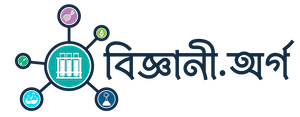
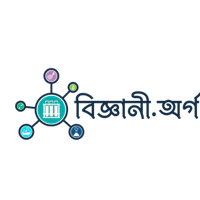






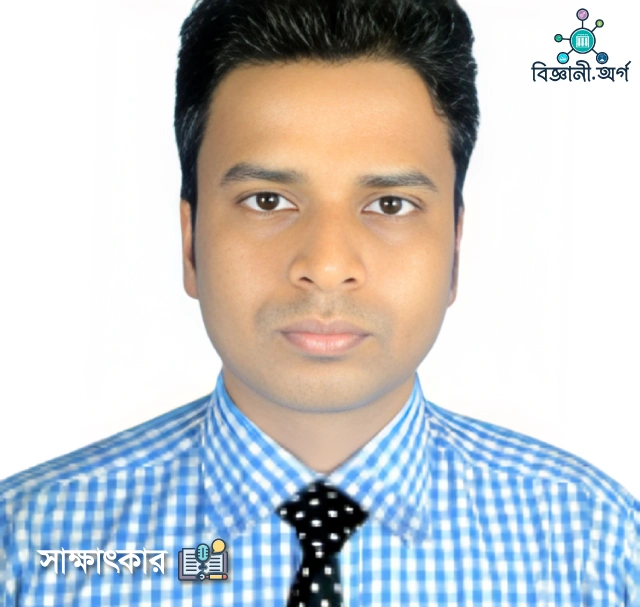
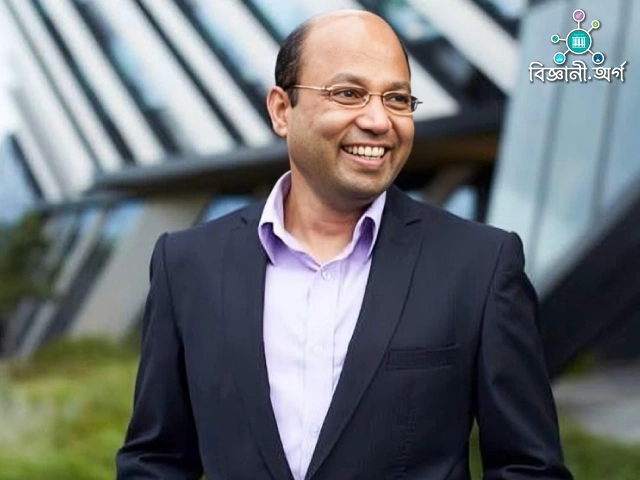
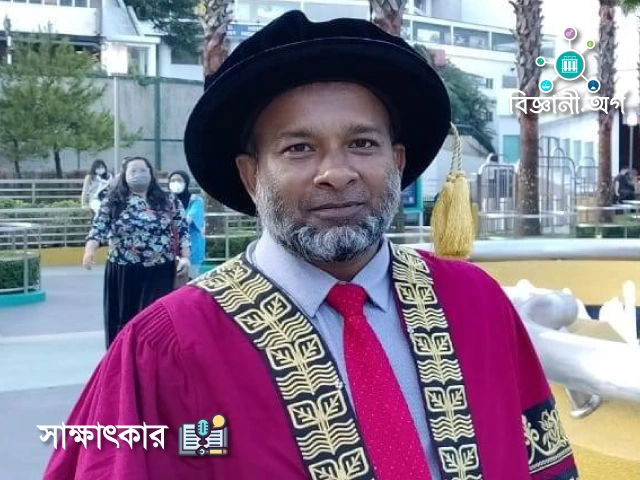
Leave a comment